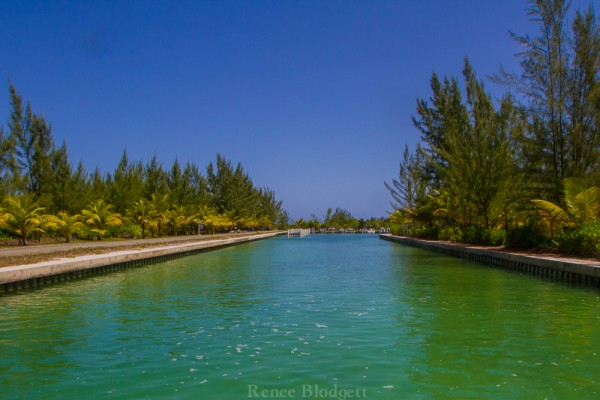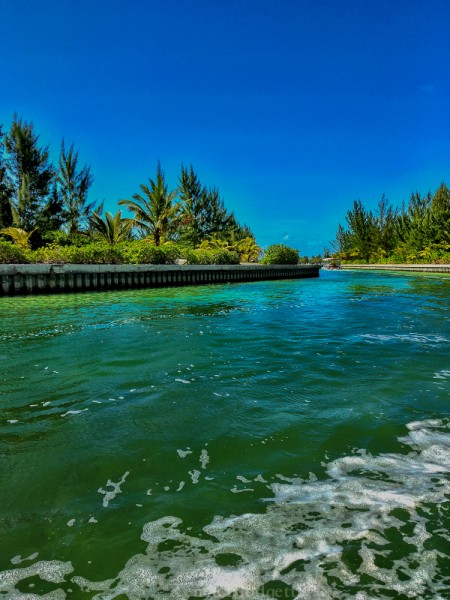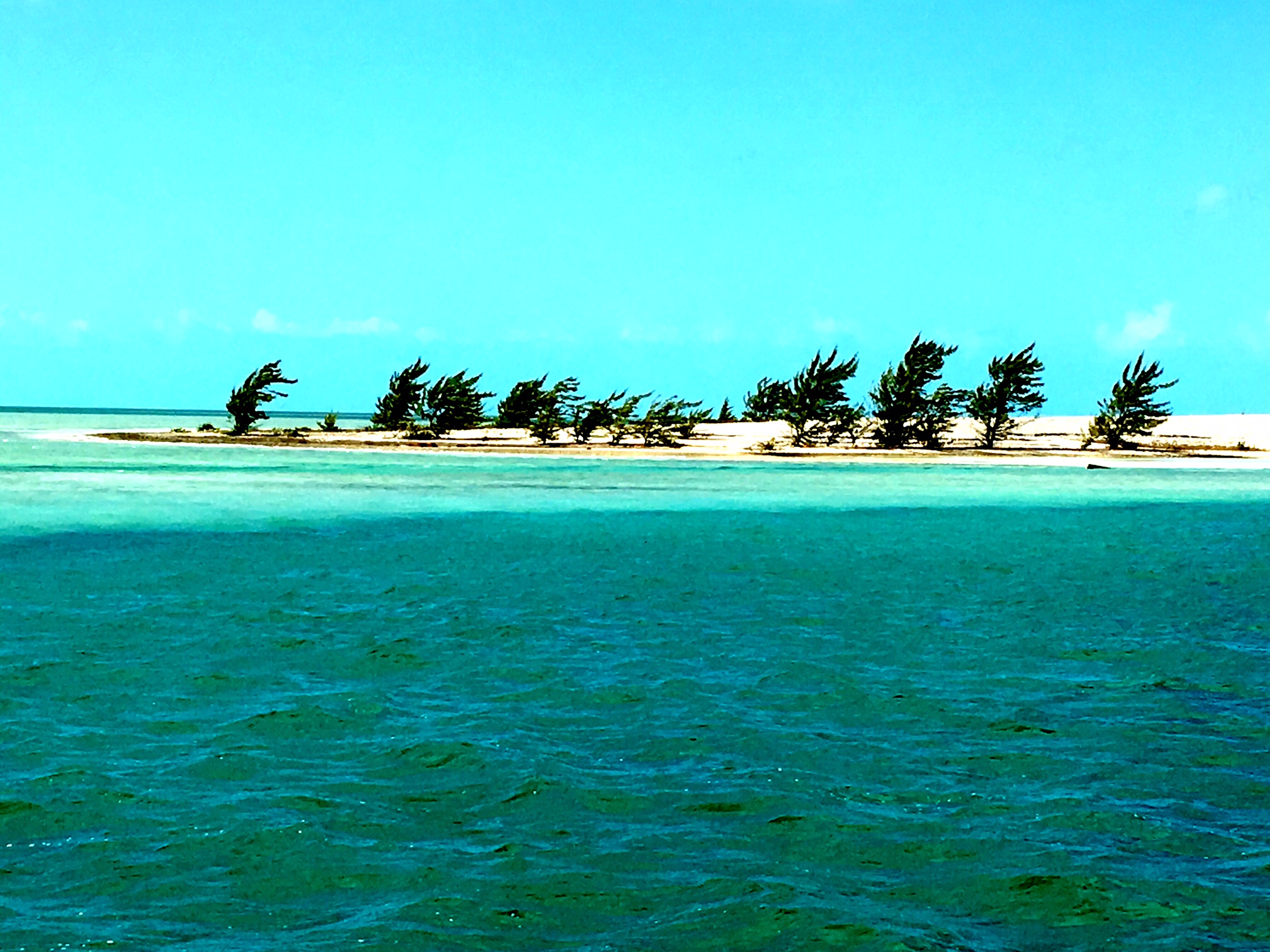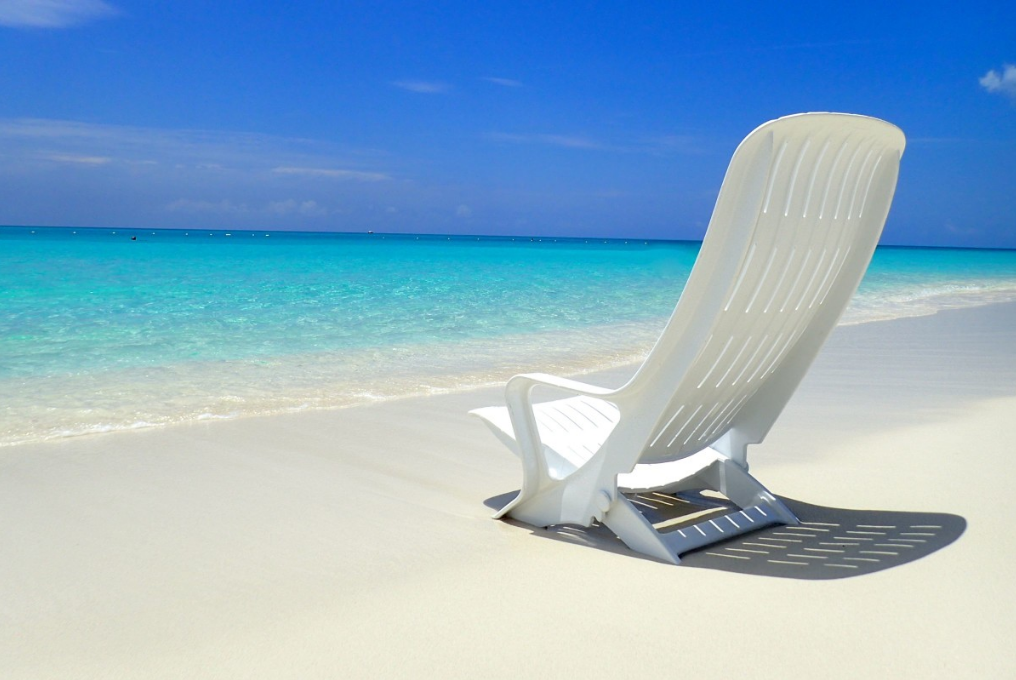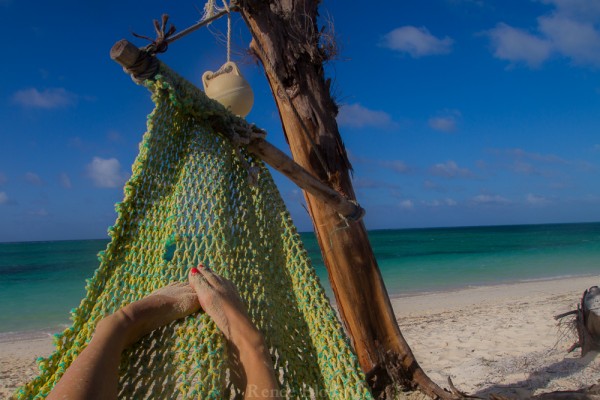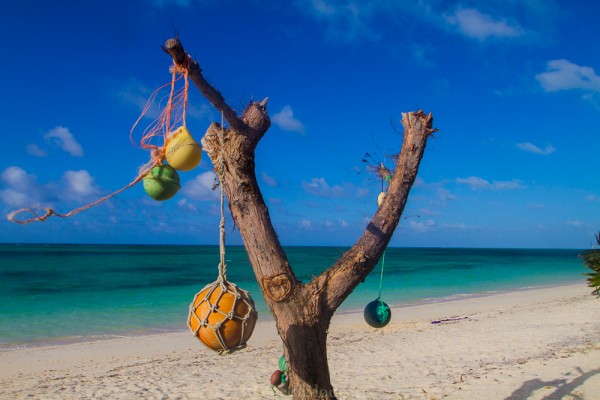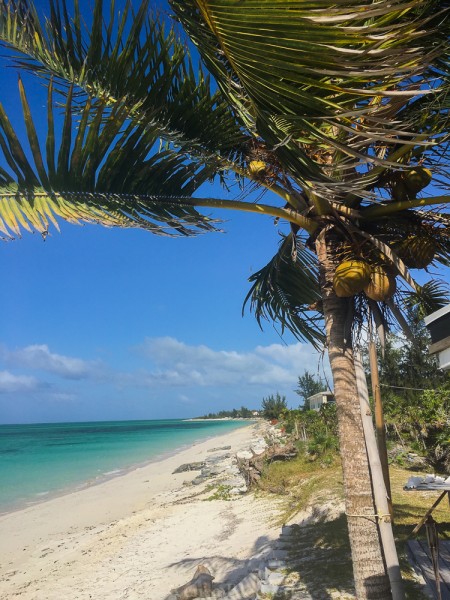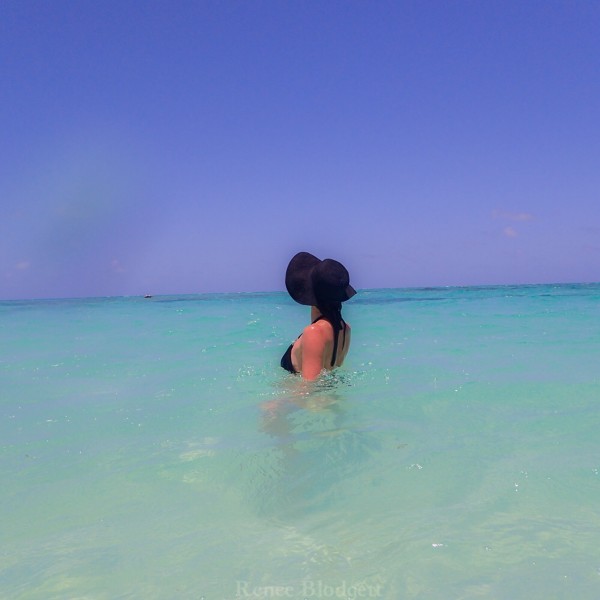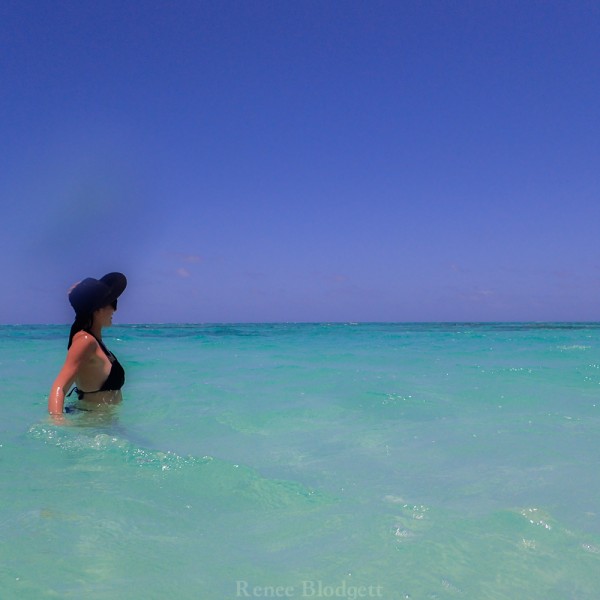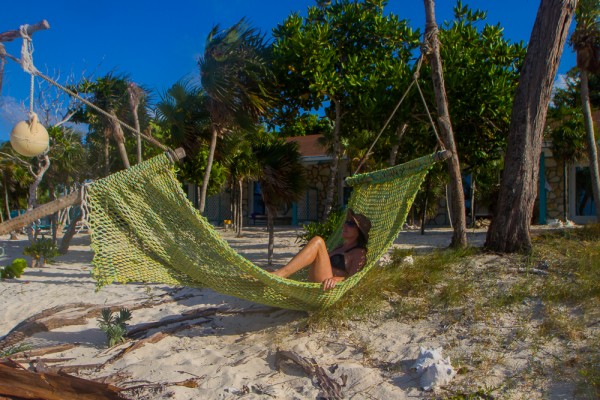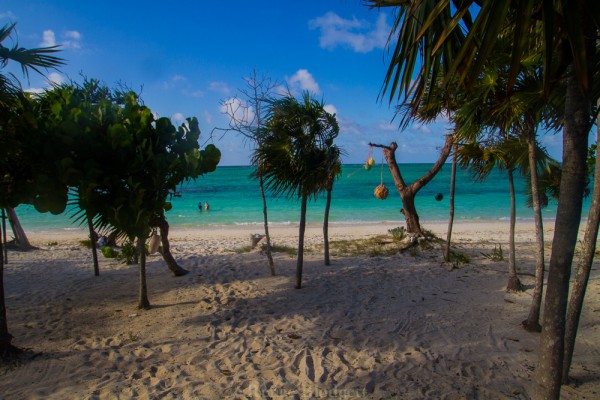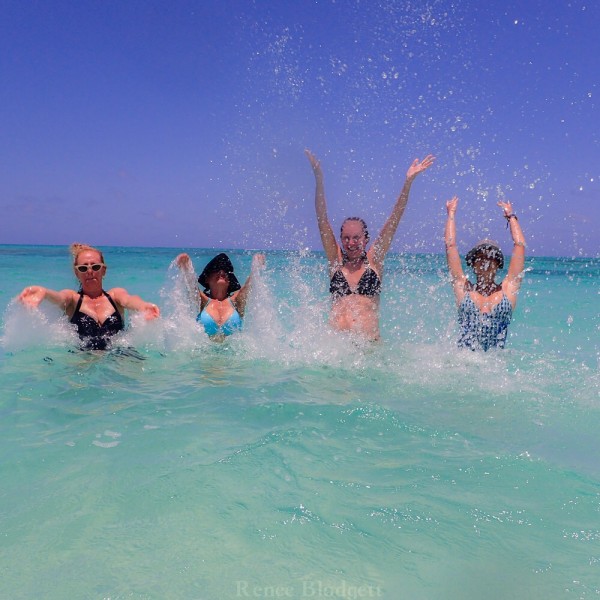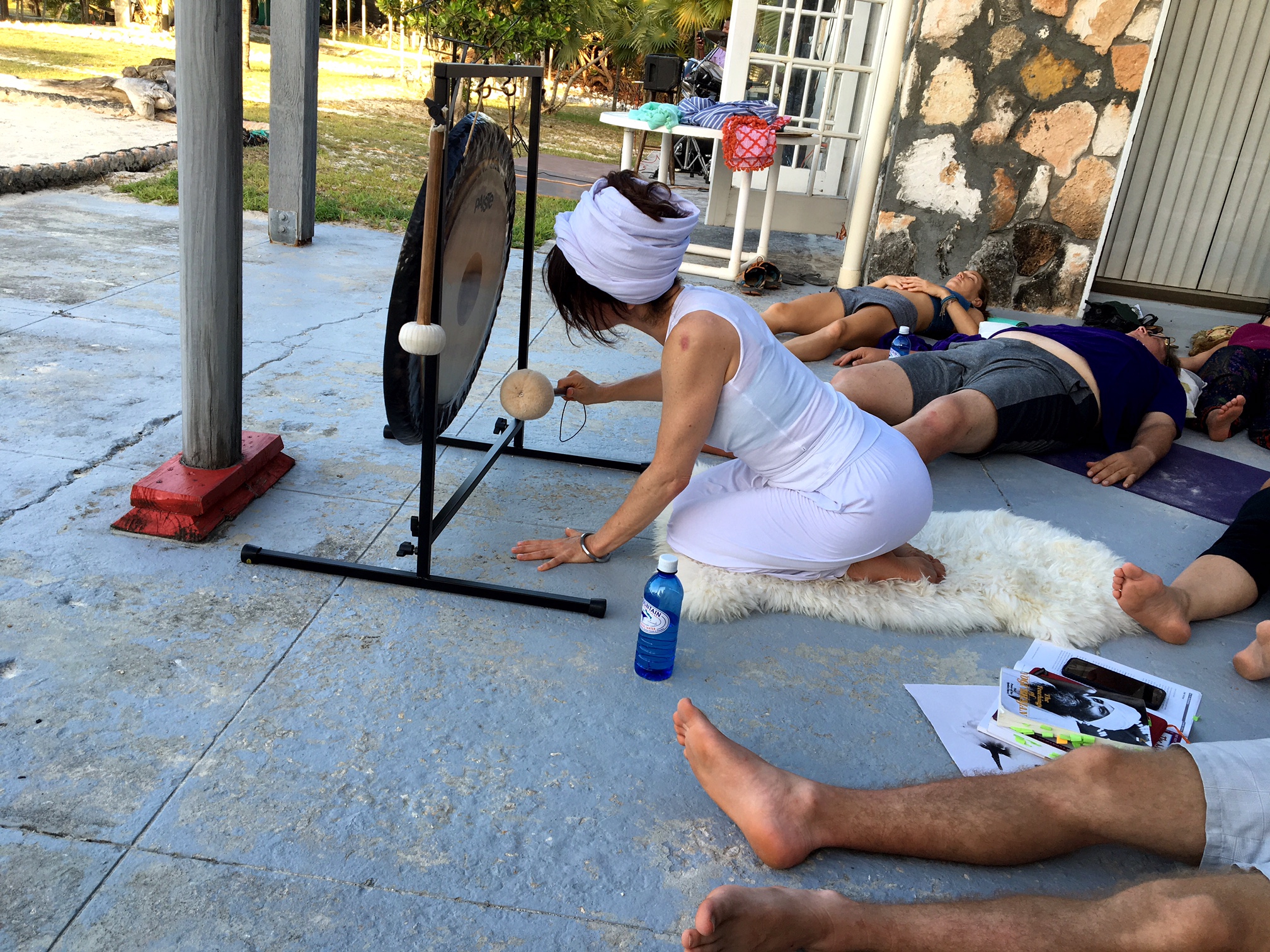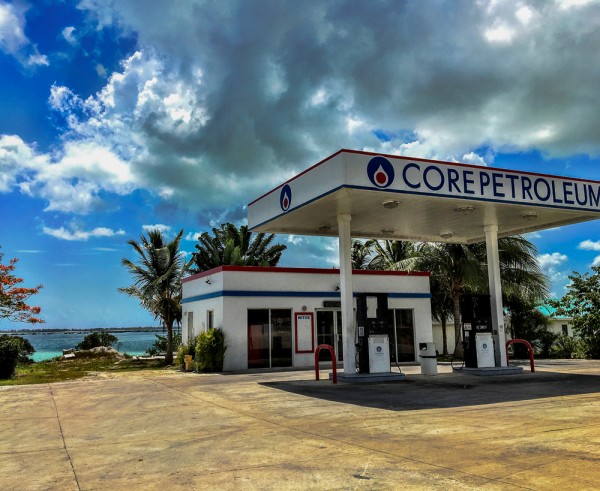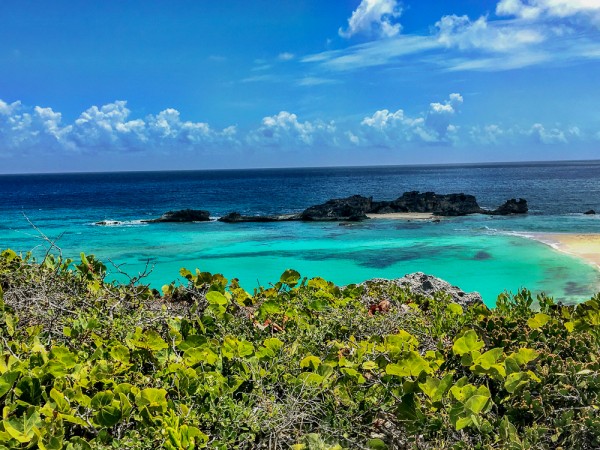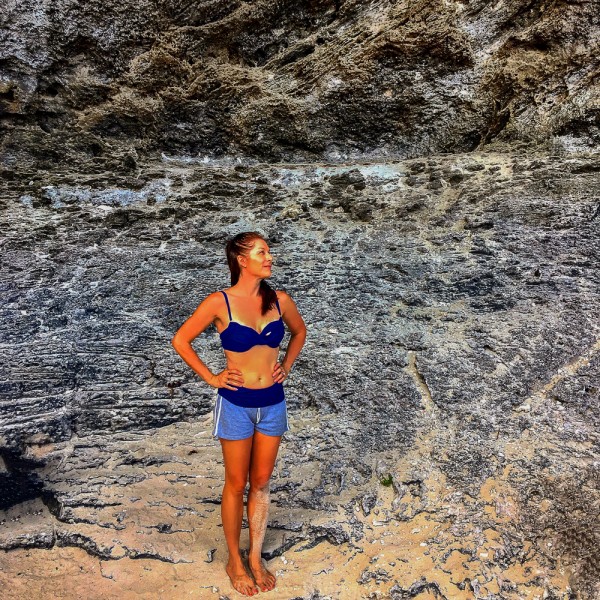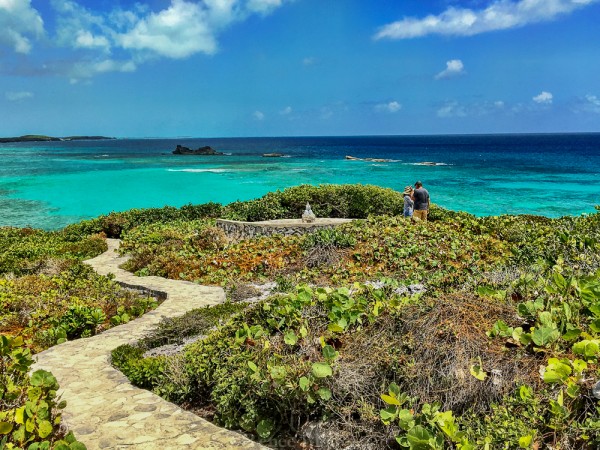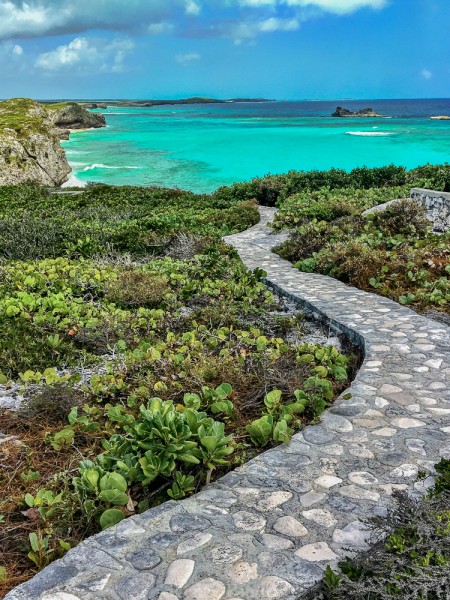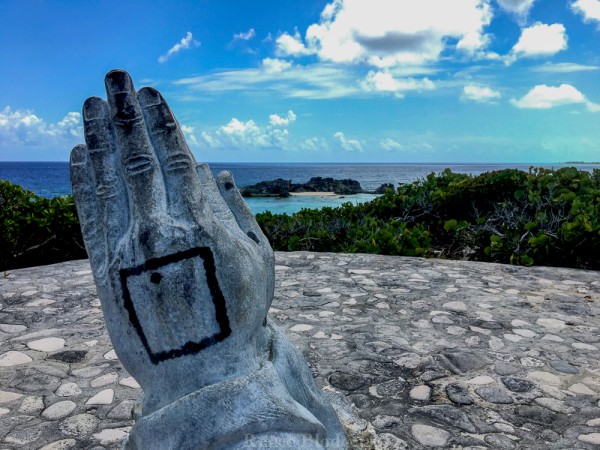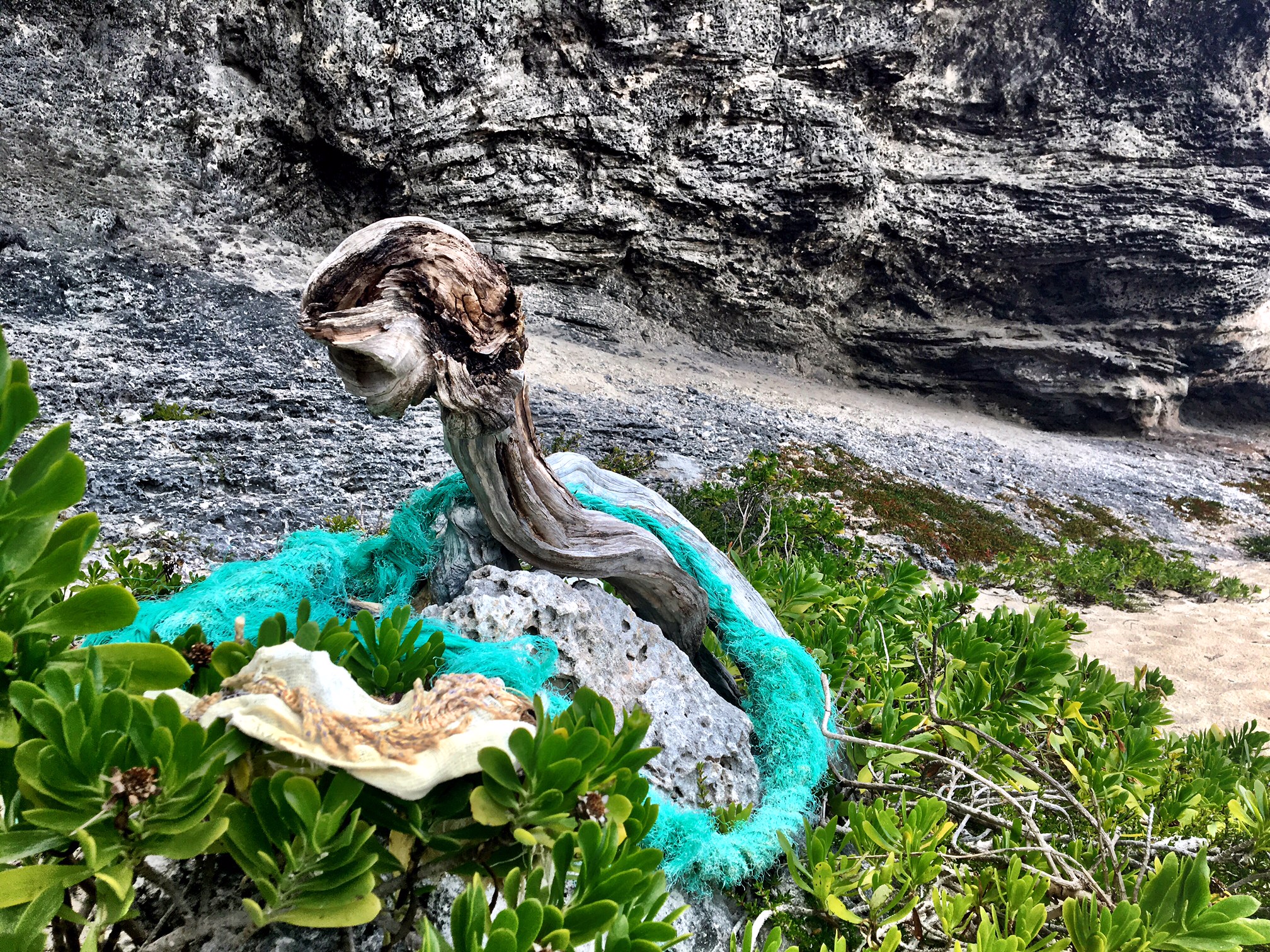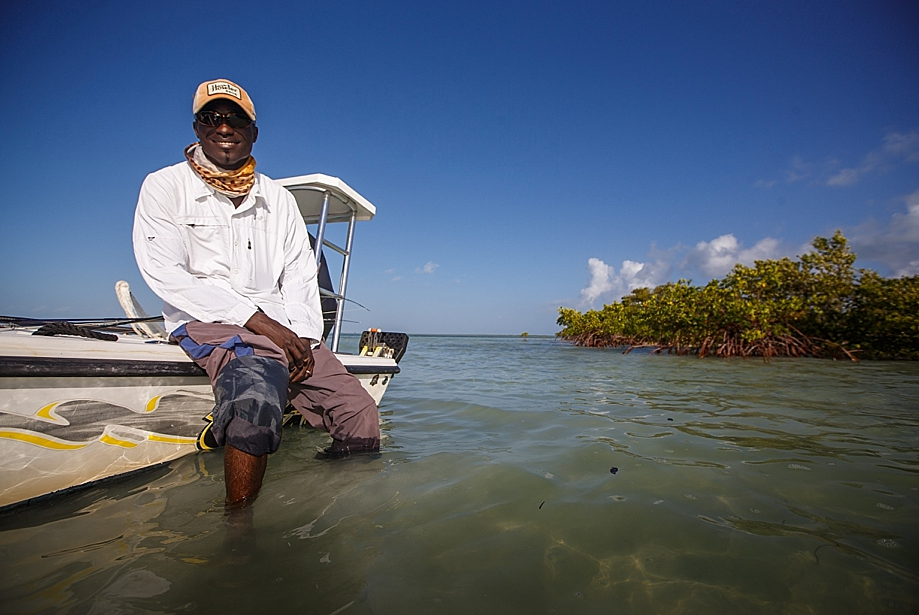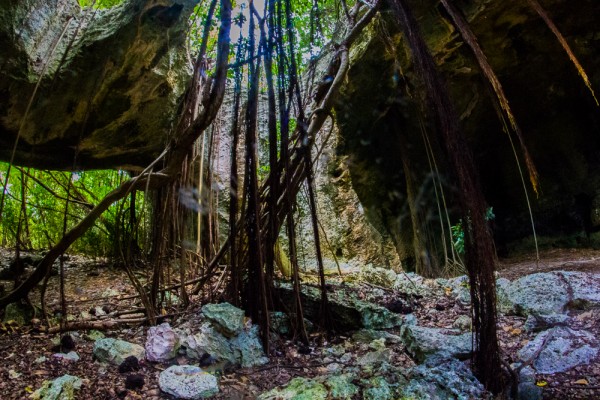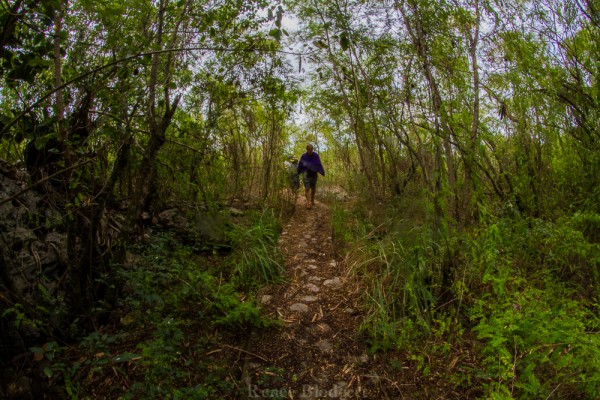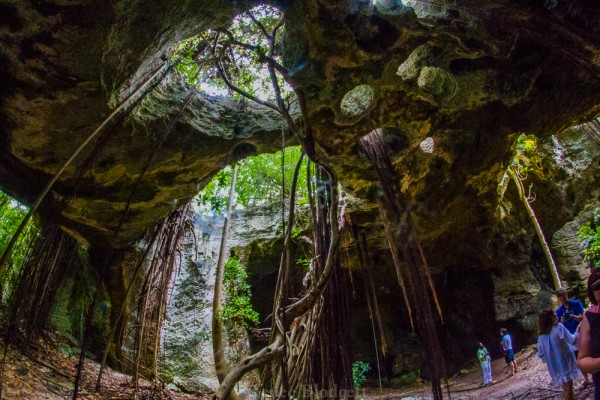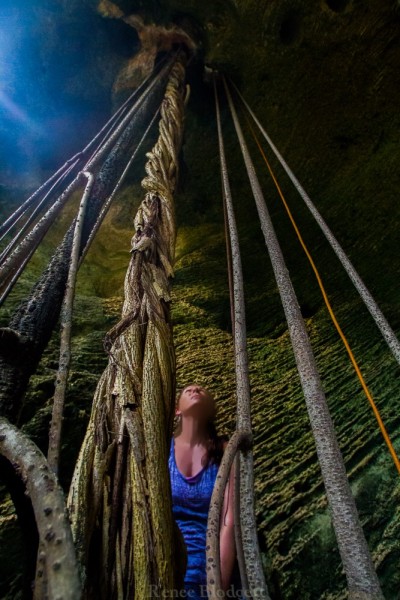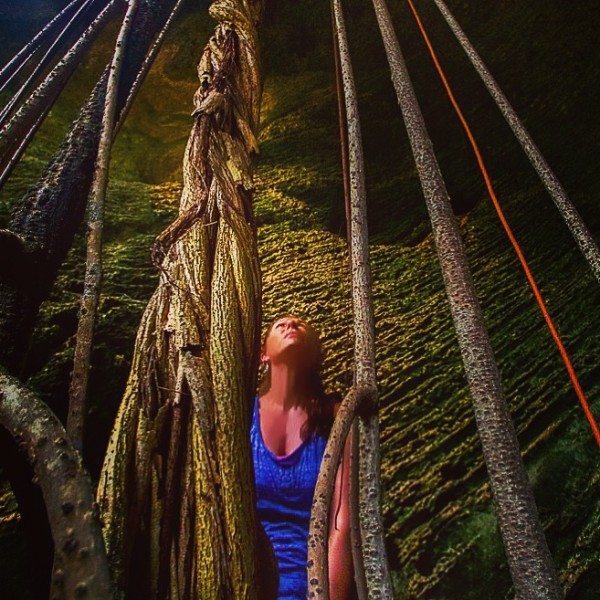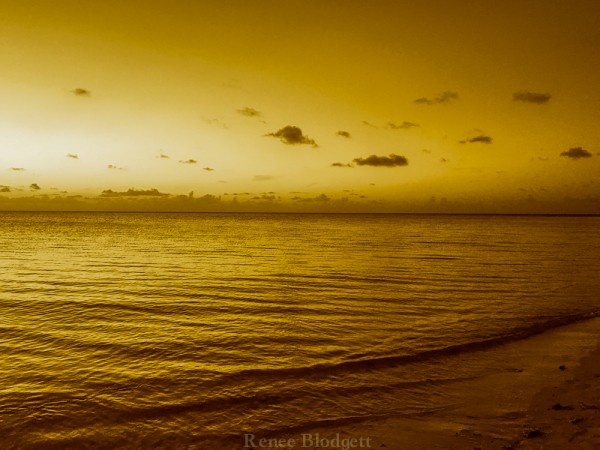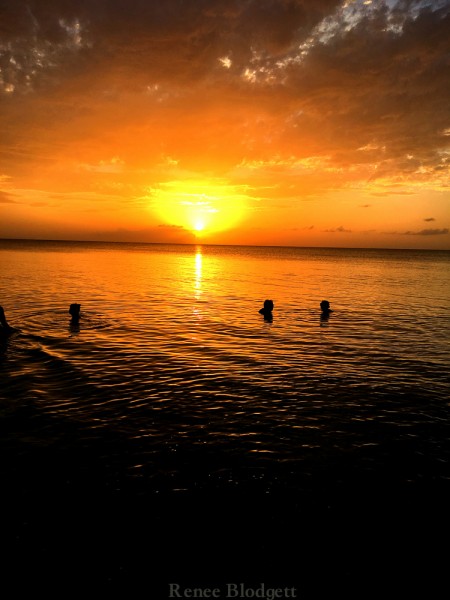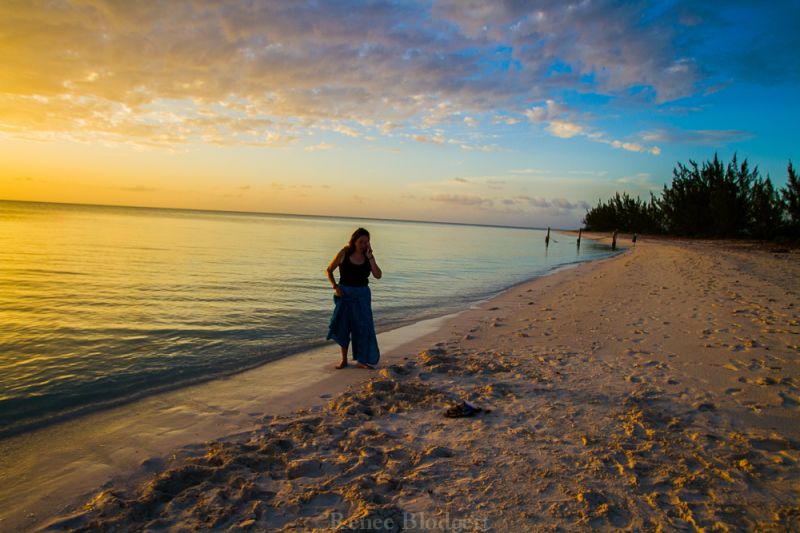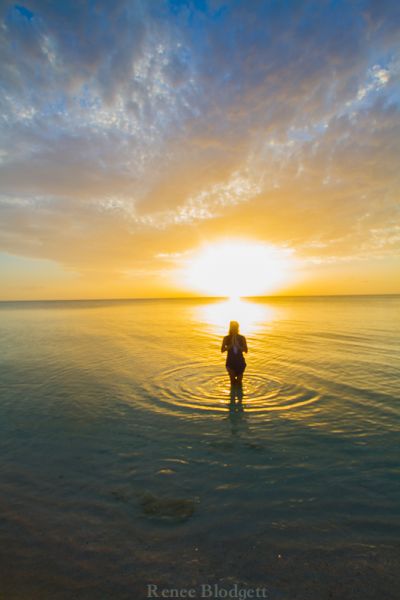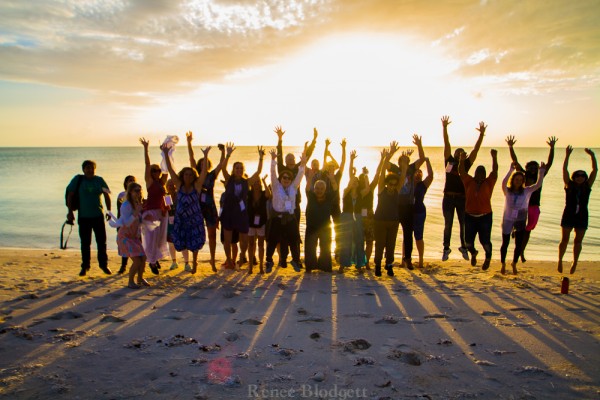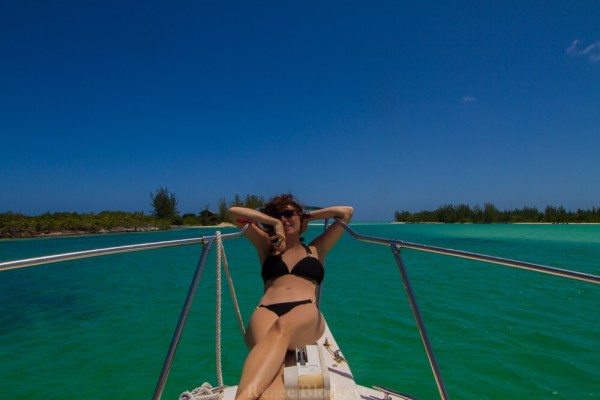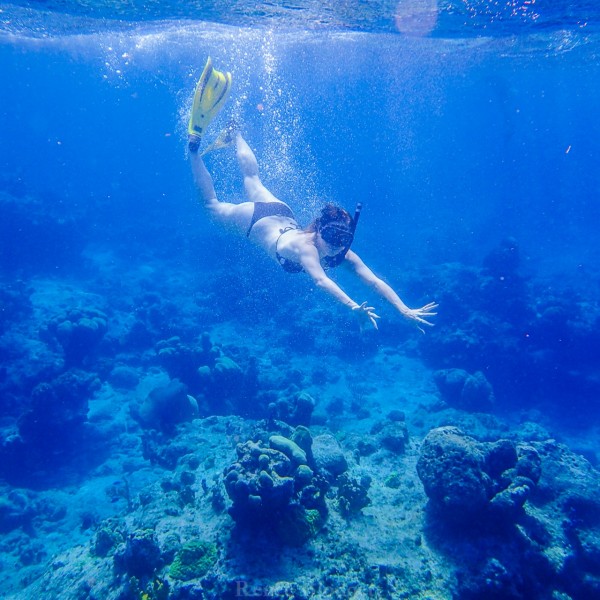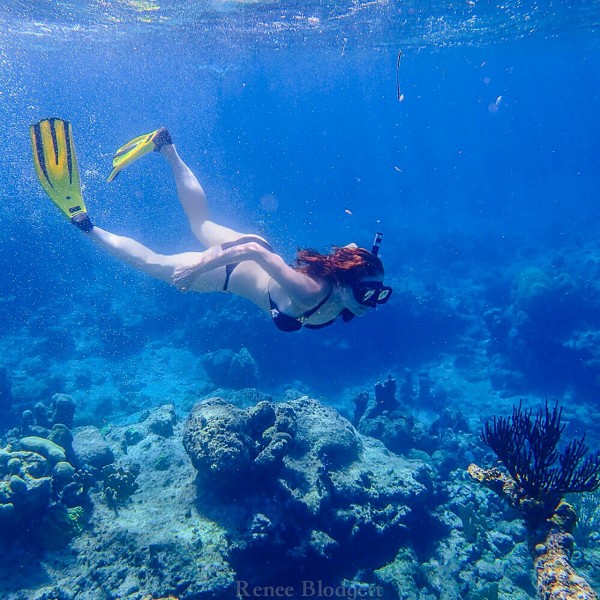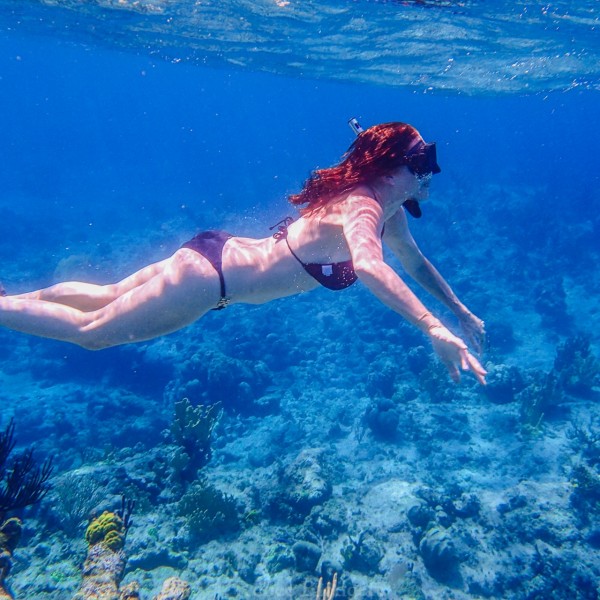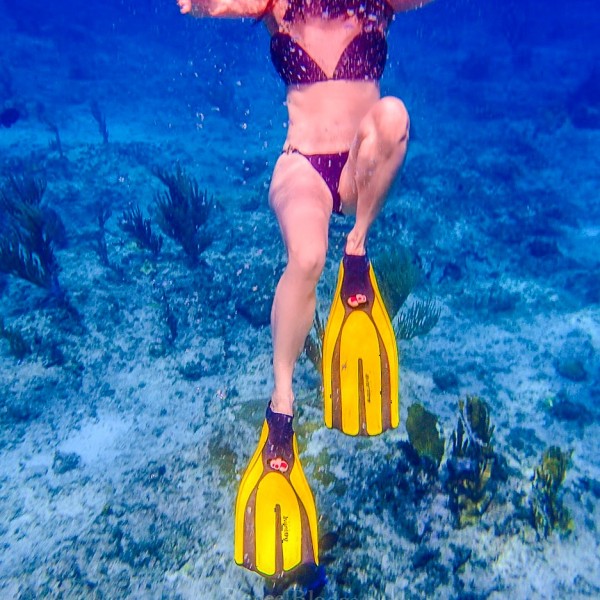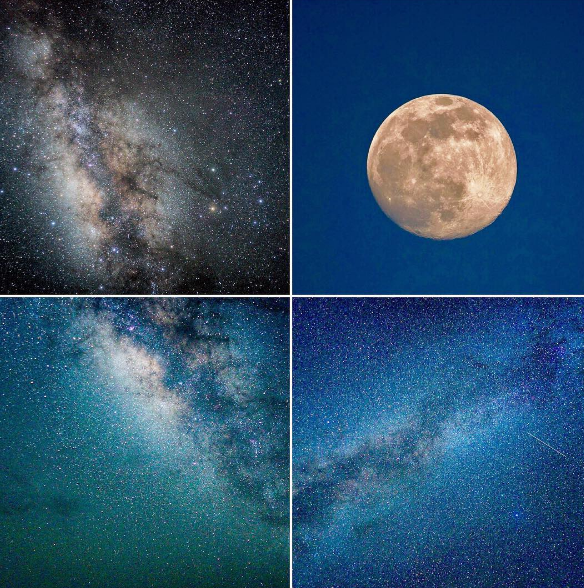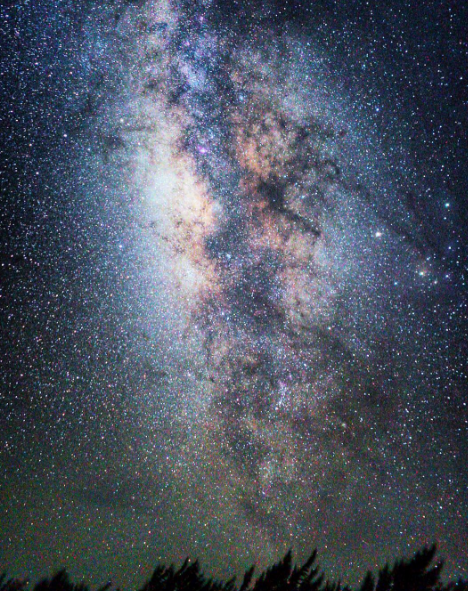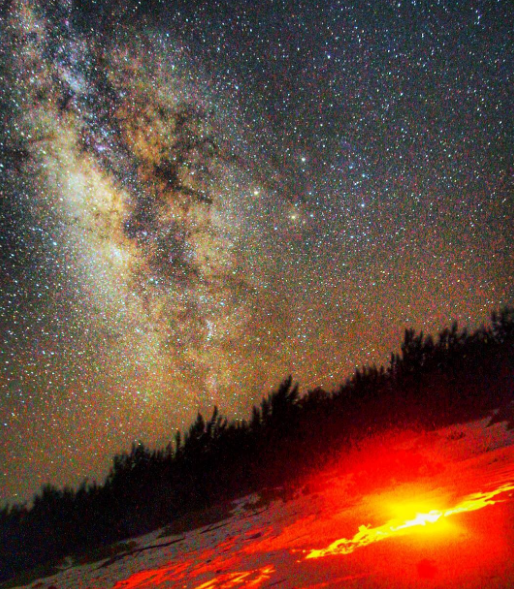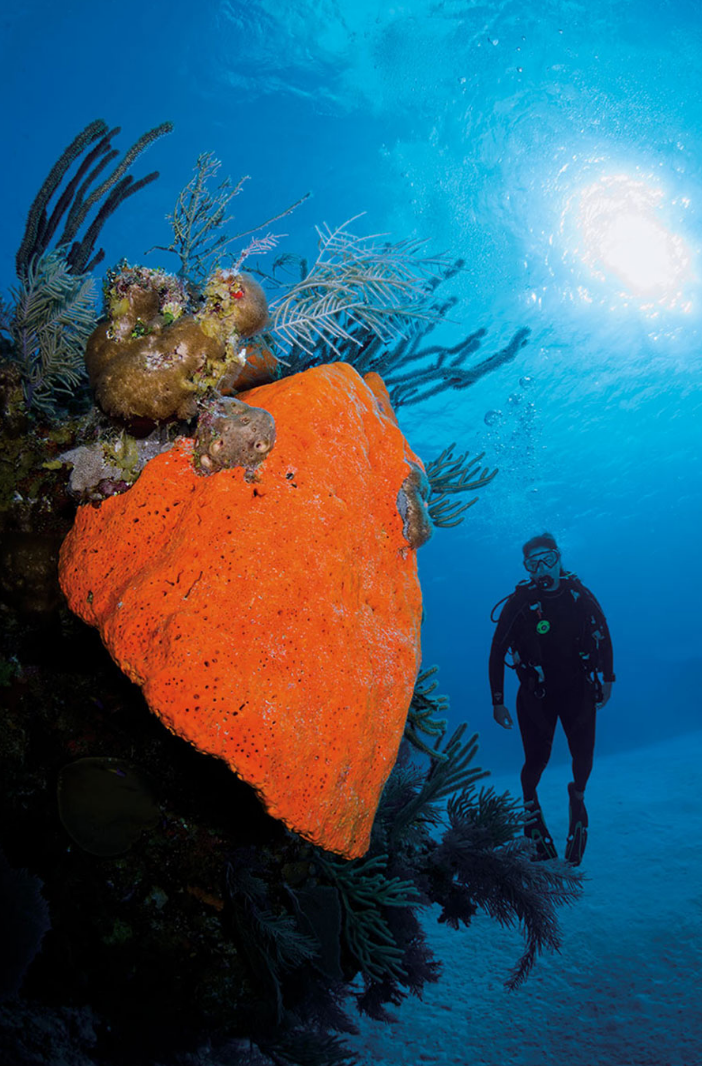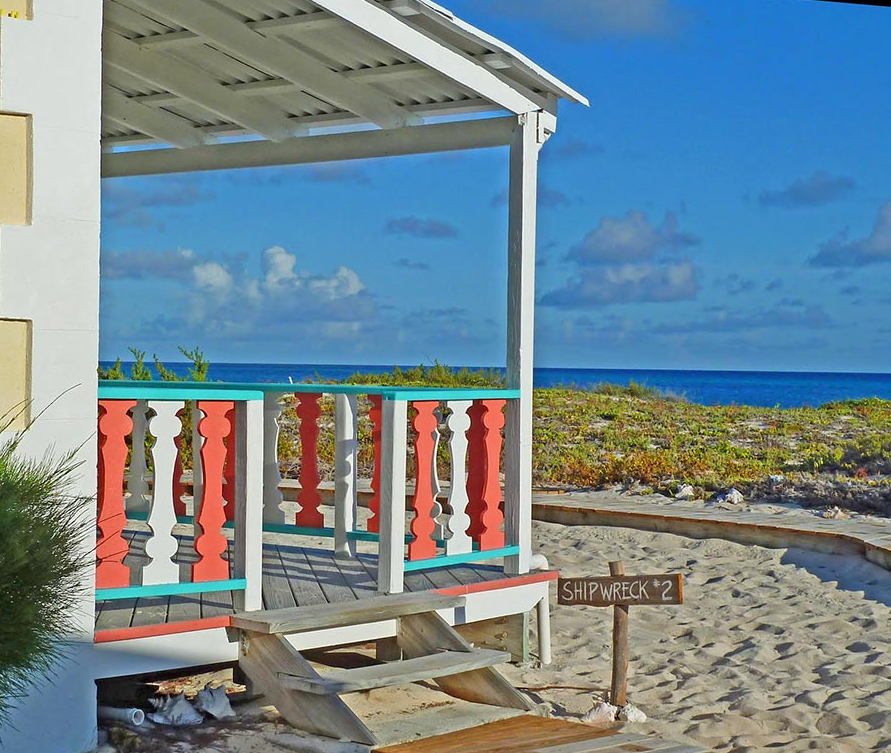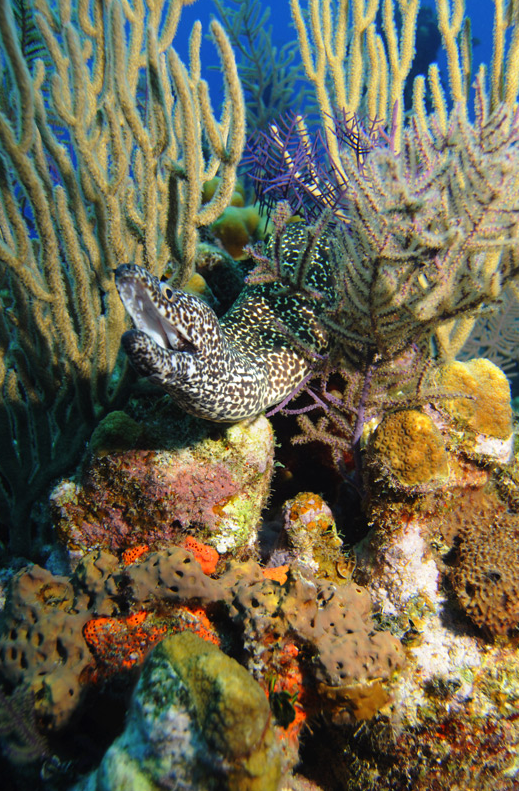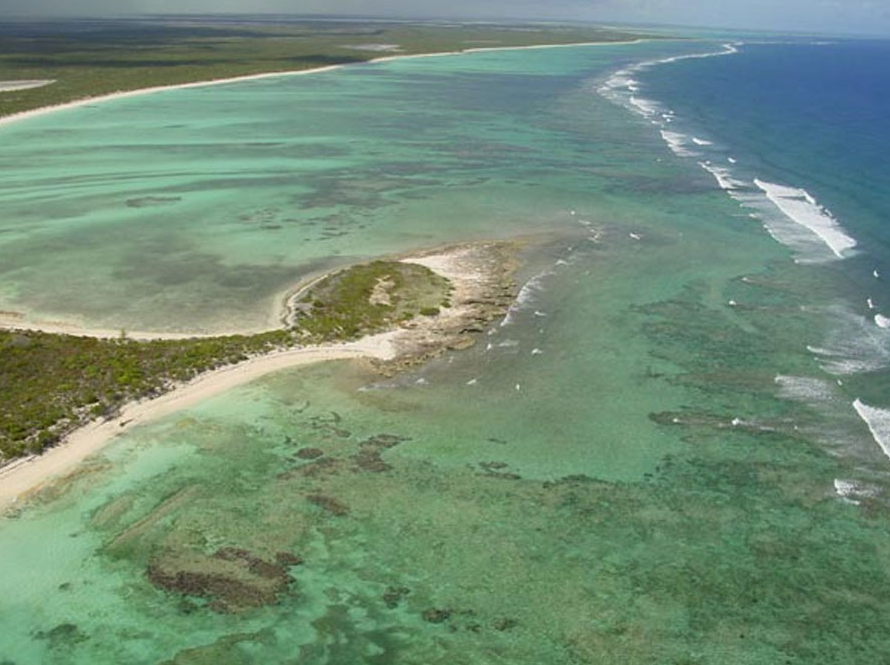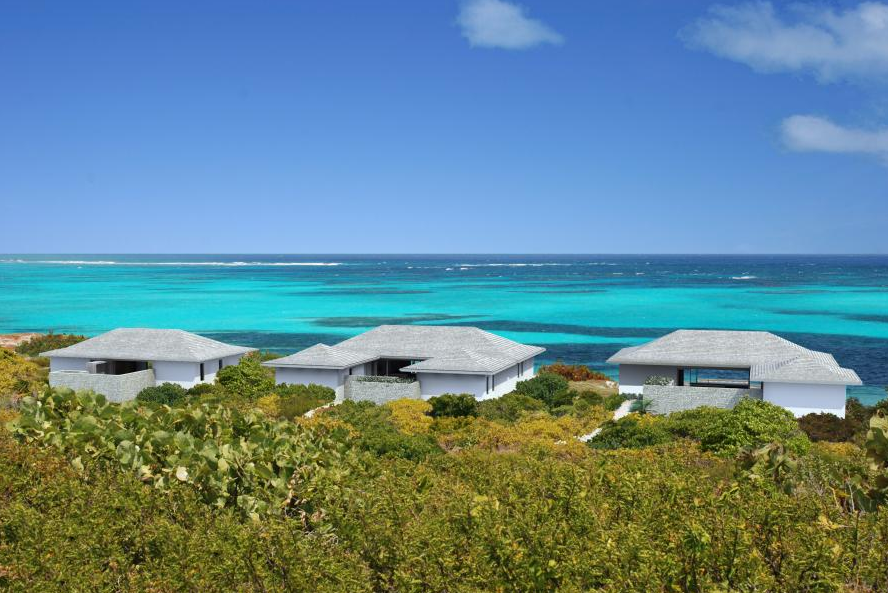I’ve been wanting to explore Turks and Caicos for awhile now, largely because I didn’t know much about the islands and it felt a bit more off-the-beaten path than the rest of the Caribbean. Minus the major cruise route of Grand Turk and the easy-to-fly into Providenciales which is where the main airport is located, and you will be pretty remote. There are apparently two unused airports, one in Middle and one in North Caicos, where I stayed in August.
The Turks and Caicos Islands is considered a British Overseas Territory. I spent most of my time moving back and forth between Middle and North Caicos Islands, which are now connected by a road. It’s important to note however that until 2008, boat was the only way to get between the two. Now, there’s a causeway which makes it easier to get around which is useful because there aren’t many places to eat or sleep in either place, which is the polar opposite of Providenciales, where there are plenty of mid-level and luxury options available. As mentioned above, cruise ships come into Grand Turk, the wealthiest stop in the Turks and Caicos — of the one million visitors every year, 600,000 go to Grand Turk and roughly 400,000 head to Providenciales. This guide mostly reflects North and Middle Caicos, which is a bit more remote, quiet and untouched than Provo and Grand Turk but I do provide a short synopsis on East, West and South Caicos as well as the tiny island of Salt Cay.
Below, the boat ride from Provo over to the North and Middle Caicos Islands….
Providenciales (Provo)
Providenciales, or more commonly known as “Provo”, covers an area of 38 miles and is the most developed island in the Turks and Caicos. The island is dotted with stunning white sand beaches, and because it is so developed, there are numerous restaurants, spas and shopping facilities, luxe properties, a championship caliber golf course, and full service grocery store, which is not the case on Middle and North Caicos. On the north shore of the island, near Grace Bay, you will find the most beautiful beaches, as well as a long coral reef, which is rich in aquatic life. Towards the south of the island sits Chalk Sound, a large lake with striking turquoise water and small cays. When you head to the south of the island, you’ll pass by Sapodilla Bay, Copper Jack, Discovery Bay, Turtle Tail and Long Bay, where there are many options for villa rentals if you want to be a little more remote or if you need more space and have a family in tow.
The two main and oldest settlements on the island are the Bight and Blue Hills, which exude a sentimental feel and flavor of Caribbean villages. There is plenty to do here, mostly focused on water activities of course, such as deep sea fishing, diving, snorkeling, boating, swimming and other water sports. There’s the Princess Alexandra Marine Park, which is also the playground of “Jo Jo” the famous bottlenose dolphin.
Above, Grace Bay Beach, credit: www.uncommoncaribbean.com
You can also visit the world’s first Conch Farm where you can learn how to grow conch from tiny veligers to four-year-old adults. A cool factoid is that you can find engraved stones by shipwrecked sailors on the top of a hill overlooking the now abandoned Marina Inn near Chalk Sound and Sapodilla Bay. For historians, check out the old ruins nearby — there are two sites of plantation houses built by Loyalists, Cheshire Hall and Richmond Hill. Then there’s the “Hole” at Long Bay, which is a deep and wide Limestone chimney with mysterious salt water at the bottom.
North Caicos
To get over to North Caicos, where I stayed at the basic but beautiful beachfront property Pelican Hotel, you need to catch a boat (it’s a bit like a fast ferry really) but it’s small, so it’s important to reserve in advance just in case. From there, you’ll take a taxi (Mack’s is the only taxi in town but be sure to negotiate anyway — they may quote you around $150 to get to Middle Caicos) or you can rent a car from Al Rental Car, also the only game in town and the rates are around $75 a day. Hotels and restaurants are few and far between and include the infamous Miss B’s, My Dees, Blitz, Last Chance Bar & Grill, the sports bar which is owned by a man named Clifford together with Miss Susie, who also owns and runs the Pelican Hotel, which also has a small restaurant. We ate at all of them course given the limited options. As for hotels, there are lots of abandoned properties unfortunately and it looks as if they were started with good intention but stopped due to lack of funds.
Above, lying in the hammock on the beach in front of Pelican Beach – taken on my iPhone
A friend of mine from the technology industry absolutely loves the Turks and Caicos, so much that he held an event here focused on Astronomy and Photography, which is tremendous due to the dark night skies and great visibility. He likes to refer to the Turks and Caicos as the Island of Unscalable Ideas. Let’s face it, there’s only 1,800 people living on North Caicos and a mere 200 on Middle Caicos, so I guess there should be no surprise that there’s not a plethora of restaurants, spas and hotels.
There are lots of churches here however and you’ll probably be surprised to learn that there’s Baptist and Jehovah Witness congregations scattered throughout the island. The largest group however is the Church of God the Prophecy which we learned a bit about from Patrick, who became our driver for most of the trip. He also happens to be Pelican Hotel owner Miss Susie’s brother. If you’re not catching on yet, you’ll see that this is a place where everyone knows everyone else and their business. Crime isn’t an issue here because of its size and perhaps because of people’s strong faith, but most likely because you couldn’t get away with a crime if you tried. Apparently there was one break-in at a local ATM and they knew who it was before having to start an investigation. It was the only ATM on the Middle and North Caicos and today, there’s none because of that incident. Note to self for planning purposes – make sure you have plenty of cash with you before you leave Providenciales.
If you want to buy property here, it’s apparently fairly easy and straightforward and at least on Middle and North Caicos, it’s not expensive yet. As far as finding the best deals, you’re all set if you know Clifford and if you stay at the Pelican, you’ll quickly run into him since he runs a business with Miss Susie, who is never far from the front desk. If you can’t find her there, she’s bound to be in the kitchen, where a large black stone kettle sits on the large commercial stove ready to be flamed up for a l’il afternoon tea. Remember all of their connections to Great Britain after all. That means of course that people “get” tea here, which is an added bonus if you happen to be a British traveler or are a tea lover.
Last Chance Bar & Grill is off the side of the road just before you hit the causeway to make your way over to Middle Caicos, hence the quirky name. I imagine that this was particularly more relevant when boat was your only option of transport between the two, although the drive can take around 45 minutes depending on how you drive, so it’s worth planning for the trek.
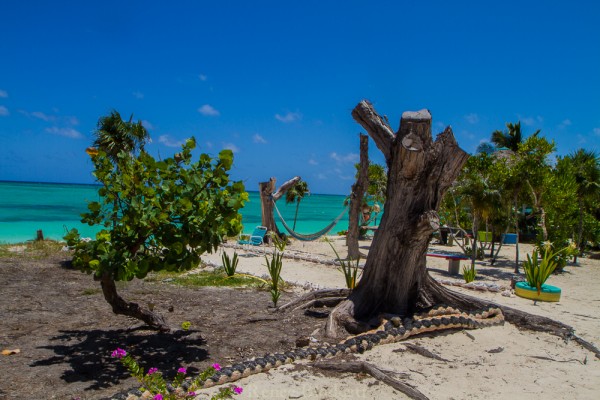
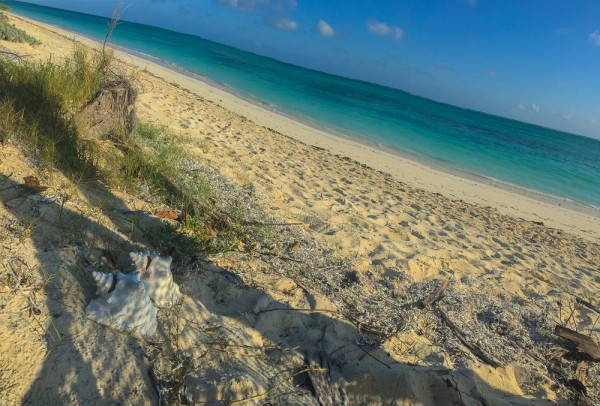
Also on North Caicos, two thumbs up for the local music and their Pina Coladas – while they don’t seem to have fancy glasses that most Caribbean destinations proudly serve, they were oh so scrumptious!
Let’s also not forget those morning yoga sessions, where meditation and the art of breathing were also the order of the day. How can you not be grateful in a place like this? It was truly magical! (taken at Pelican Beach Hotel outside between the two inside lounge and sitting areas of the main property)
Due to the fact that the west, south and east sides of North Caicos consist almost entirely mangrove wetlands and shallows, all the beaches on the island are found on the north coast. Unlike many of the Middle Caicos beaches, the coasts of North Caicos are situated farther back from the barrier reef and deep water, so are a bit more sheltered from the ocean swells.
Middle Caicos
To get to Middle Caicos, you take the causeway where you’ll come across what that same friend refers to as suicide birds who walk on the road and are especially hard to see at night. Bottle Creek is the main town in between North and Middle Caicos and there really isn’t much there; in fact, if you blinked, you might just miss the K-12 school and gas station which is randomly placed in the middle of nowhere but can at a minimum, can tout fabulous views.
Also on this stretch, you’ll find items along the side of the road, including boats, which you’ll occasionally see stashed (or should I say parked) in the middle of thick bushes. Apparently cotton was planted here during British Colonial Times of old (until around the 1700’s) but very few farms still exist today. When the Brits left, all of the slaves were freed and that group today are referred to as “belongers.” In other words, they get first dibs on jobs and other things in the community.
At night, driving can be a little tricky because there are no traffic lights so you need to be alert to catch those suicide birds and dogs who may start to randomly chase your car, day or night. Also at night, crabs are known to cross the road as well, so if night vision isn’t your thing, get someone else to drive. There’s also a stretch the moment you get to Middle Caicos where you’ll get hit with surreal silver lights along the road, which is a small paved patch and of course, patches of old road is interspersed with new road, so it feels a bit unfinished in parts.
There’s apparently a cult here called the Jews. Yes really. The group was formed by 47 people who moved down from the Midwest who believe when “the reckoning day will come,” they will be saved and Middle Caicos will be spared. Occasionally they’re in the news despite the fact that it’s a small cult but on an island of only 200, 47 makes up a significant portion of the residents given the numbers.
Worth seeing here is a lovely bird sanctuary and the lush mangrove tress. There are three different types to be on the look out for: black, silver and ones with reddish colored leaves. Middle Caicos is the most ecologically oriented and also happens to be the largest of the Islands, at 48 square miles. There are beautiful limestone cliffs with long sandy beaches in the north and swampland and tidal flats in the south. It also boasts the largest cave network in the Bahamian Archipelago.
Be sure to check out Mudjin Harbour, which is a half-moon lagoon that has a lovely beach that juts out from the land and hooks up with an offshore cay. Limestone caves include stalactites, stalagmites, bats, owls and salt lakes that link up with the ocean and there are remains of huge Lucayan Indian settlements. One site excavated near Armstrong Pond in the 1970’s contains a Lucayan ball court. Middle Caicos also contains ruins of Loyalist plantations including the Haulover Plantation with ruins of chimneys and homes, and a well shaped like a horse. There is a trail that links Middle Caicos with North Caicos during low tide you can actually walk between the two islands, which we didn’t do but would be on my list if I ever returned. There’s also a Frigate Bird colony on the south part of the island where you can spot Flamingos, Egrets, Sand Pipers and others. In the northwest, there are stunning inlets, marshes, mangroves and in land ponds, a large reason for the abundant bird life in this area.
Half our group stayed at the Blue Horizon on Middle Caicos which a bit more upscale than Pelican Beach on North Caicos, but it is also a lot more remote. They offer villas here (be sure to read my write-up on the property) which are oh so lovely with different size and price options depending on your needs. It makes for a great romantic getaway, a perfect spot for any artist or writer to get some alone time, as this place allows for truly reflective moments and inspiration, and could also be a nice getaway for a family if you want to introduce your kids to the powers of nature and astronomy. Remember that in most urban areas and even small towns, we have so much noise and light pollution in our skies that we don’t see the stars in the same way you will in the Turks and Caicos. A few shots taken below are of the area in and around Blue Horizon’s property, which has a restaurant overlooking the ocean.
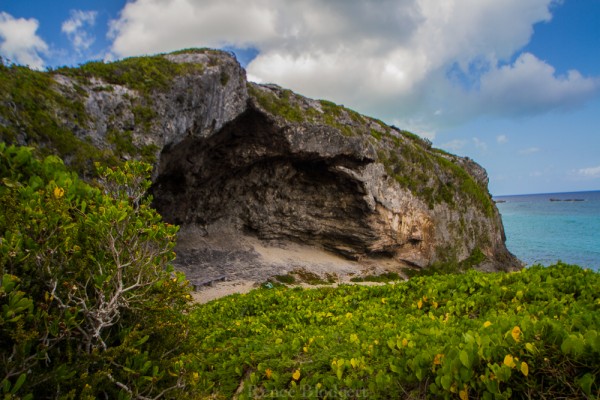
Walking down to the inlet where you can swim on a beautiful sandy beach that is protected.
Bone Fishing
Middle Caicos is apparently famous for bone fishing. Who knew? Bone fishing is no doubt, an art and the first step is to pinpoint the prey. It turns out that bonefish anglers don’t rely on luck, but rather a keen sense of sight and the ability to cast a fly rod pretty well. With fish living in shallow water, the banks of the Turks and Caicos attract bone fishing lovers from around the world.
It is said that on a clear day you can spy bonefish up to 100 feet away. If you don’t see the silvery fish directly, it turns out that you might see its shadow on the sand or bits of sediment lurking, which are all signs of feeding bonefish as they dig up crab and shrimp. No, we didn’t go bone fishing due to lack of time, but I’m keen to learn more about it and who knows, perhaps even try it on a future trip to the Turks and Caicos.
Photo credit: Island Life and Times
The Indian Cave
Near the old cotton fields, there’s a well known Indian Cave off the main road into Middle Caicos. It’s a bit Indiana Jones-like in spots but not really overwhelming or frightening largely because it’s high and consists of only a one single gallery cave with tons of openings and skylights. Like nearly all sinkholes and caves found in the Turks and Caicos, Indian Cave was created by what is called the Karst Process: the slow action of slightly acidic rain water that dissolved the the limestone. Inside, you can find barn owls, bats, Cuban crows, yellow crowned night herons and anis, as well as giant blue land crabs although we didn’t come across any during our visit.
It feels damp when you’re inside, which makes it easy for native plants and papaya trees to grow. They believe that there were habitants here pre-Columbus and in the 1990’s they did an archeological dig which resulted in some fascinating finds, including ancient pottery, bones and fossils of many animals, such as an extinct tortoise and giant iguana, small reptiles, owls, parrots and hawks.
I was mesmerized looking up although there was plenty to explore in the nooks, crannies, walls and floor of the cave as well. The lighting when we were there was magnificent and it was hard to leave, knowing that it would be a very different place after the sun went down.
The Sunsets
Speaking of the sun setting, there are so many great places to catch breathtaking sunsets here every night however many swear by the views and sunsets at Pumpkin Bluff in North Caicos. The beach that runs along here is absolutely breathtaking and in between, you’ll come across limestone hills and cliffs like much of North Caicos. The water is clear and warm and it’s also centrally located, but is still somewhat secluded, so the chance of you having to share the beach with a ton of others is low depending on what time of year you visit. Of course, the beach at Blue Horizon is also a stunning spot as well as from any of the nearby trails where you can walk to from there on Middle Caicos.
Below, a group shot taken at Pumpkin Bluff!
Snorkeling
You can hire a boat from to take you out to more remote waters of the Barrier Reef for either diving if you have equipment or snorkeling – Miss Susie helped us set this up and our driver did have snorkeling gear to accommodate around ten of us. Compared to Provo, snorkeling on North Caicos and Middle Caicos comes up a bit short. Middle Caicos does offer some really excellent sites when the ocean conditions are flat and calm, but such conditions can be especially uncommon during the winter months. The only decent site on North Caicos is Three Marys Cays which we explored one day.
Above, on the boat out to the coral reef
Because it was fairly windy, the waves were fairly rough at times, but once you made your way under the water, a magical wonderland of fish and coral emerged. I used my Olympus Tough TG-4 waterproof camera which I first reviewed last November to take these shots. We were lucky to see a black fin shark, stingrays, brain coral and plenty of small colorful reef fish in yellows, neon greens and bright blues. Be sure to read my separate write-up on Snorkeling in the Turks and Caicos Islands, which has a lot more photos of my experience.
Astronomy
The Turks and Caicos is known for its unpolluted skies and one of the reasons it is such a great place to visit if you’re an astronomy lover. There’s apparently a light pollution app that shows you where to find the most unpolluted skies, aka the darkest skies around the world. Although I did bring my Canon 7D with me and a few tripods in case others could use, I never managed to quite capture the incredible stars from my camera despite magic moments under those dark skies. We mostly star gazed at Pumpkin Bluff and from Blue Horizon on Middle Caicos. Another great spot is Wild Cow Run, where you can spot the Milky Way and catch great shots of stars like Jeff Pulver managed to do below.
Photos by Jeff Pulver (Instagram feed here: http://www.instagram.com/jeffkenipulver) | Collage of Jeff’s photos by SpiritSoulLove on Instagram: http://www.instsagram.com/spiritsoullove
West Caicos
While I didn’t visit West Caicos, it supposedly has the best diving spots despite the fact that it’s only nine square miles and uninhabited. On the island is Lake Catherine, a nature reserve that boasts incredible bird life. There are also ruins on West Caicos called Yankee Town, which include an osprey’s nest crest, a sisal press, railroad and steam engine, all apparently evidence of civilization that once existed on the island.
Photo credit: Turks and Caicos Tourism
Salt Cay
This is a super tiny island at only 2.5 square miles and incredibly remote. Since I didn’t go here during my last trip, this information has largely been collected from the tourism board and their suggestions for what to do and see. According to them, you’ll feel as if you’ve been transported back in time.
In the 1600’s, this island was apparently the center of the Bermudian Salt Industry, and while not much is left, you can still see the olden wind mills, a majestic white house which is still owned and preserved by descendants of the original Bermudian Salt Rakers and most of the homes are built in Bermuda style. There’s only around 80 inhabitants, so you could likely meet them all if you tried.
“Be Transported Back in Time!!”
Visit the ruins at Taylor’s Hill for one of the most breathtaking views on the island. This is a great spot for whale watching from January through April when whales come flocking to the waters in and around Salt Cay and birding is the other big thing of noteworthiness here.
Photo credit: Turks and Caicos Tourism
Grand Turk
As mentioned above, Grand Turk is where all the cruise ships stop, so it’s more commercial and built up than any other spot in the Turks and Caicos. It is also the first place that Christopher Columbus stopped on his way to the “New World” in 1492. Cockburn Town is the main hub where you’ll find historical architecture, Colonial style buildings, ruins, the Turks and Caicos Museum and operators where you can book a diving trip, which it is very known for with its protected coral reef which apparently drops to around 8,000 feet in some spots. Depending on the time of year you go, you can also catch humpback whales even from the shores. You can also taste conch and learn about the importance of conch in the area and its history.
Although I didn’t try them, I’ve been told that Oasis Divers offer good expeditions with dives that have visibility averages of 100 feet and water temperatures of between 82°-84° in the summer and only down to 74°-78° in the winter. Apparently they dive in small groups and you can see a variety of marine life, from Manta Rays, Spotted Eagle Rays, Nassau Groupers and turtles to stingrays, schools of horse-eyed jacks, puffers, trumpetfish, snappers and more.
Photo credit: Oasis Divers
East Caicos
This place looks stunning and also very remote, so it depends on whether you want access to more restaurants, activities and people, or be completely off the grid, or in the case of North Caicos, in between, although remember even on North Caicos, there are very few restaurants and no ATM. East Caicos is an uninhabited island but is larger than the other remote islands of the group at 18 square miles. For the most part, it is made up of swamps and mangroves although there is a 17 mile beach on the northcoast of the island, but mostly used by sea turtles to lay their eggs because of so many mosquitos – be forewarned. Close to Jacksonville in the northwest of the island, there are a bunch of caves and although there was once a sisal plantation and a cattle industry here, it is now deserted.
Photo credit: Turks and Caicos Tourism
South Caicos
South Caicos is all about deep sea and bone fishing, birding, history, seafood dishes and diving. They also refer to South Caicos as “The Big South,” since it is the fishing capital of the islands, so there’s no shortage of seafood here, from fresh fish to lobster and conch. South Caicos is also home to the annual Big South Regatta each May.
The harbor town Cockburn Harbor boasts a ton of history — check out the 18th century Commissioner’s House where Queen Elizabeth once stayed, the old salt works, the iguana preserve on Long Cay, the Boiling Hole, which fed the salt pans that once made South Caicos the islands’ largest producer of salt and of course its bird life. If you love flamingoes, then this is a great spot to photograph them. You’ll notice remnants of both British and Bermuda heritage, which is also reflected in the architecture and narrow streets.
For snorkelers and divers, marine life you may be able to see here under the sea include sharks, eagle rays, loggerhead turtles, spotted rays, octopus and barracudas. Unlike some of the more remote islands, there are connecting flights, a TCI Ferry and boat charters to get here.
Photo credit: SouthCaicos.com
Useful Links:
- The Amanyara Resort in Providenciales
- Blue Horizon Vacation Rentals on Middle Caicos
- The Pelican Beach Hotel in North Caicos
- Snorkeling in the Turks and Caicos Islands

Renee Blodgett is the founder of We Blog the World. The site combines the magic of an online culture and travel magazine with a global blog network and has contributors from every continent in the world. Having lived in 10 countries and explored nearly 80, she is an avid traveler, and a lover, observer and participant in cultural diversity.
She is also the CEO and founder of Magic Sauce Media, a new media services consultancy focused on viral marketing, social media, branding, events and PR. For over 20 years, she has helped companies from 12 countries get traction in the market. Known for her global and organic approach to product and corporate launches, Renee practices what she pitches and as an active user of social media, she helps clients navigate digital waters from around the world. Renee has been blogging for over 16 years and regularly writes on her personal blog Down the Avenue, Huffington Post, BlogHer, We Blog the World and other sites. She was ranked #12 Social Media Influencer by Forbes Magazine and is listed as a new media influencer and game changer on various sites and books on the new media revolution. In 2013, she was listed as the 6th most influential woman in social media by Forbes Magazine on a Top 20 List.
Her passion for art, storytelling and photography led to the launch of Magic Sauce Photography, which is a visual extension of her writing, the result of which has led to producing six photo books: Galapagos Islands, London, South Africa, Rome, Urbanization and Ecuador.
Renee is also the co-founder of Traveling Geeks, an initiative that brings entrepreneurs, thought leaders, bloggers, creators, curators and influencers to other countries to share and learn from peers, governments, corporations, and the general public in order to educate, share, evaluate, and promote innovative technologies.



